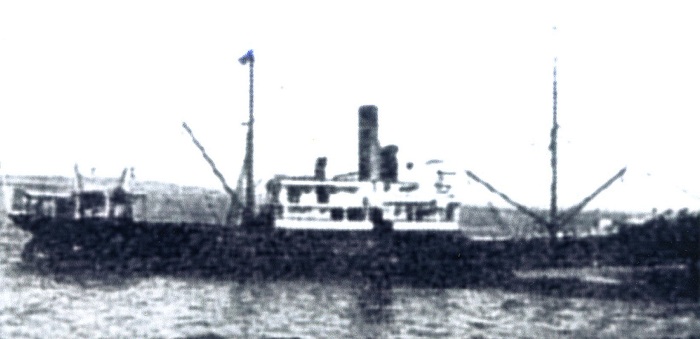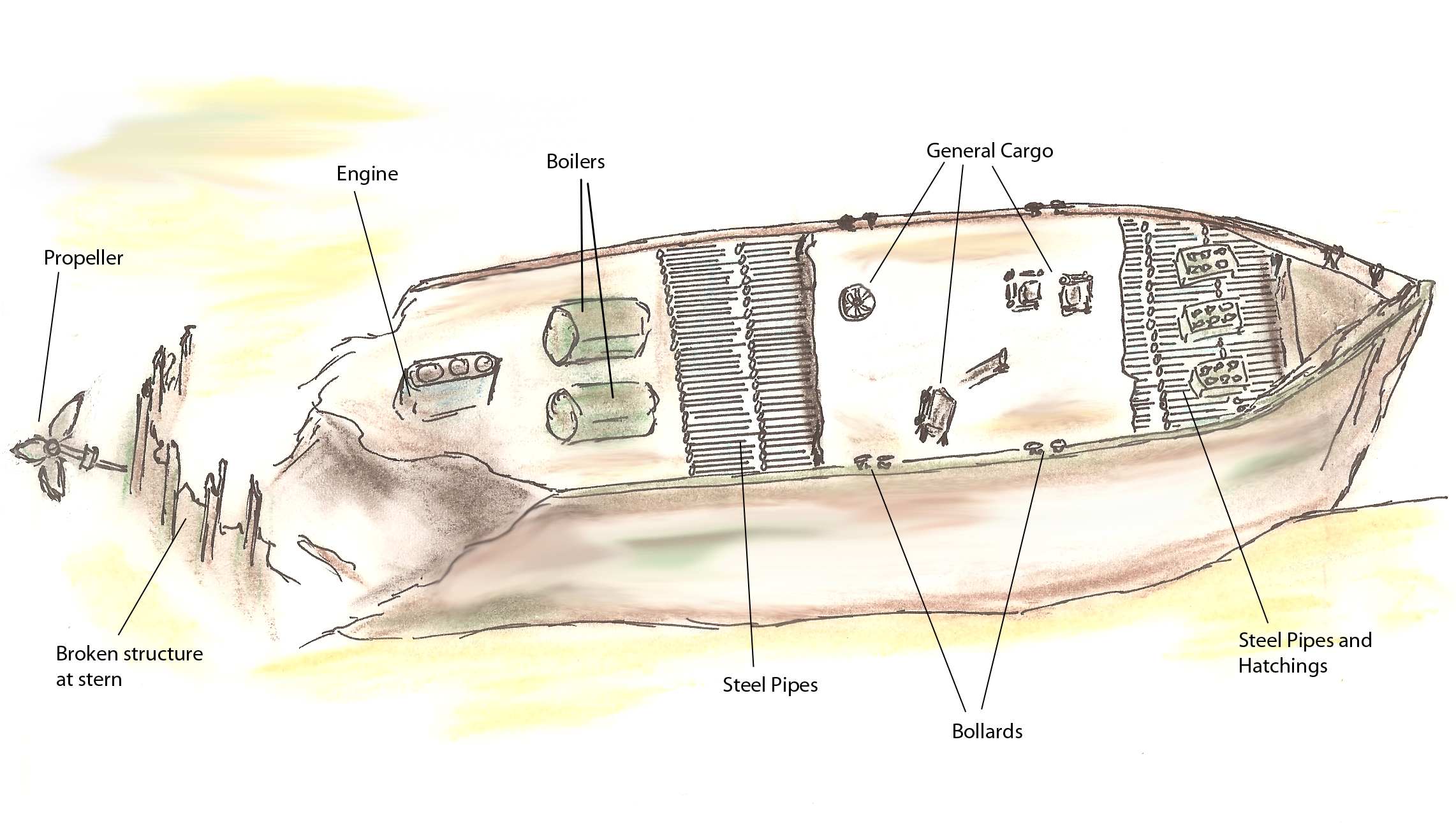
Vessel History
The SS Azemmour was a steel freighter built in 1909 by the Short Brothers in Sunderland. It was powered by a triple expansion steam engine with two single ended boilers and a screw propeller. The vessel was 62.56m in length and 10.05m in width, and was capable of an average speed of 10 knots. The ship was originally called the as the Wistaria and was built for Mower Cotterell & Company Ltd. In 1911 the vessel was sold to British Burmah Petroleum Company Ltd, but was subsequently purchased in December 1912 by CH Pile for Shipping Investments Ltd. Wistaria was then sold to the French firm Compagnie Generale Transatlantique on 17th January 1913 and renamed Azemmour. Prior to the First World War the Azemmour was deployed by Compagnie Generale Transatlantique on their Mediterranean shipping routes.
On 18th March 1918 the Azemmour departed London for Nantes with over 1200 tonnes of cargo; 716 tons of general cargo and 500 tons of steel. There were 28 crew aboard, including Captain Jean Guillaume. On 20th March the vessel was south of the Needles when the German U-boat UB-59, moved in to attack. At 4.44am the crew felt a shudder as if the ship had been struck by something. Some minutes later the periscope of a submarine was seen and the captain ordered the ship to head away from it in a vain attempt to escape. Less than a minute later a torpedo slammed into the ship’s port quarter.
The commander of UB-59, Fritz Wassner, noted in his war diary that the first torpedo launched against the Azemmour failed, but the UB-59 pursued the ship and hit it with and with a second torpedo. The damage was extremely severe and the captain ordered the crew to the lifeboats. They had no time to use the ship’s 90mm stern gun to return fire, as the vessel slipped beneath the waves in four minutes. Some of the crew saw the surfaced submarine, before they were picked up about 30 minutes later by the Admiralty Yacht Maid of Honour. Five of the 28 crew were recorded as missing.
Site Overview
The wreck of the Azemmour lies approximately 15 miles to the south west of St. Catherine’s Point at the southern tip of the Isle of Wight. The wreck is at a depth of 40m and lies upright, rising six metres above a flat seabed. It is reasonably intact forward of the engine, though the area around the bow leans out towards the seabed. The engine is the highest part of the wreck, and aft of this the wreck site is more disparate with the remains becoming level with the seabed. The Azemmour was originally 62.56m in length and 10.05m in width, and the current length of the wreck is close to these original measurements. Part of the cargo of steel pipes is still visible stacked in the forward holds, along with several other items that are presumably part of the general cargo. The 90mm stern gun is still visible aft of the engines.
This site information has been provided by Mr David Wendes, a local maritime historian who has carried out extensive archival research on the vessel. The results of this research can be viewed in: Wendes, D. 2006. South Coast Shipwrecks off East Dorset and Wight: 1870-1979.
No previous archaeological survey has been made of the wreck site, but it is a popular dive site and has been frequently visited by sports divers. The vessel’s identity was confirmed by crockery recovered from the site. A number of artefacts have been retrieved from the site and reported to the Receiver of Wreck as part of the Wreck Amnesty in 2001. These include a gauge, a porthole, two oil boxes, two valves, two paraffin holders and a plate.
Latest Investigations
Further diving on the Azemmour site took place in 2010 and 2011 as part of the Archaeological Atlas of the 2 Seas project. The main objective was to confirm the position, extent, stability and character of the site. Taped measurements of observed archaeological features were recorded.

